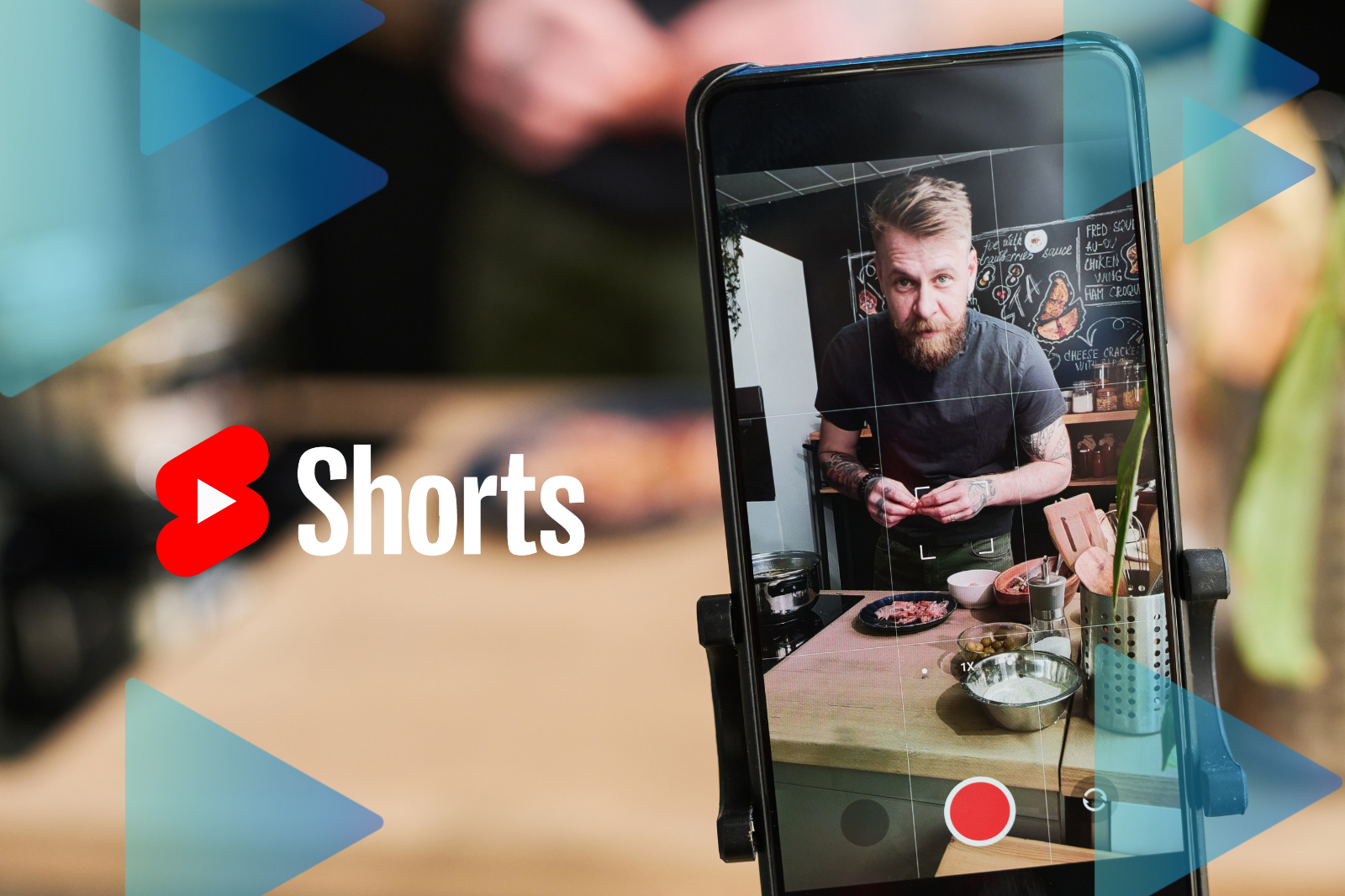
As a YouTube creator, deciding between focusing on short-form content and long-form videos can significantly impact your channel's success. With the rise of YouTube Shorts and the enduring popularity of traditional long-form content, understanding the nuances of both formats is essential. In this blog post, we'll delve into the monetization aspects, usage scenarios, optimal video lengths for maximizing revenue, and how viewing habits differ between TV and mobile platforms.
The Evolution of YouTube Content
YouTube has undergone significant transformations since its inception in 2005. Initially, it was a platform for sharing amateur videos, but it has evolved into a robust ecosystem supporting diverse content forms. With over 2 billion logged-in monthly users, YouTube has become a critical platform for content creators, influencers, and brands.
In recent years, short-form content has gained immense popularity, partly due to the success of platforms like TikTok and Instagram Reels. In response, YouTube introduced Shorts, providing creators with new opportunities to engage their audience with quick, bite-sized videos.
Monetization for YouTube Shorts
Monetization is a critical factor for creators when deciding between Shorts and long-form content. YouTube Shorts, despite their relatively recent introduction, have quickly integrated monetization options. Here are the key points:
- Shorts Fund: YouTube has established a $100 million Shorts Fund, available to creators meeting specific criteria. This fund is distributed monthly, rewarding creators for popular Shorts. While not as lucrative as traditional ad revenue, the fund provides a significant incentive for creators to produce Shorts.
- Ad Revenue Sharing: YouTube plans to expand ad revenue sharing for Shorts, enabling creators to earn directly from ads viewed between Shorts. This model is still in its early stages, but it holds promise for creators looking to monetize short-form content more effectively.
- Sponsorships and Brand Deals: Creators can also monetize Shorts through sponsorships and brand deals, similar to long-form content. Brands are increasingly interested in leveraging the viral potential of Shorts to reach wider audiences quickly.
- Merchandise and Affiliate Links: Similar to long-form videos, creators can promote merchandise or include affiliate links in their Shorts. This method allows for additional revenue streams, especially if the Shorts drive significant traffic.
Monetization for Long Form Videos on YouTube
Long-form videos have been the backbone of YouTube monetization strategies for years. The primary monetization methods include:
- Ad Revenue: Creators earn a portion of the ad revenue generated from ads shown during their videos. The length of the video can impact the number of ads displayed, influencing earnings. Longer videos can include more mid-roll ads, increasing potential revenue.
- Channel Memberships and Super Chats: These features allow viewers to support creators directly through monthly memberships and tips during live streams. Memberships often come with perks such as exclusive content, badges, and emojis.
- Merchandise Shelf: Creators can sell branded merchandise directly through their YouTube channel. This feature is integrated with platforms like Teespring, allowing creators to design and sell their products easily.
- Sponsorships and Affiliate Marketing: Many creators partner with brands or promote affiliate products to supplement their ad revenue. Sponsored content can be highly lucrative, especially for channels with a large and engaged audience.
The Use of Shorts
Shorts offer a unique set of advantages that can complement a creator's content strategy:
- Quick Engagement: Shorts capture viewers' attention quickly, making them ideal for conveying short, impactful messages. In a world where attention spans are dwindling, Shorts can be an effective way to engage audiences swiftly.
- Viral Potential: The short, easily consumable nature of Shorts makes them more likely to be shared and go viral. This can lead to rapid growth in subscribers and views, especially if the content taps into trending topics or challenges.
- Content Teasers: Creators can use Shorts to tease longer videos, driving traffic to their primary content. This strategy can increase views on long-form videos and keep the audience engaged across different content types.
- Trend Participation: Shorts allow creators to participate in trending challenges and hashtags, increasing visibility. Engaging with trends can help creators reach new audiences and stay relevant in the ever-changing digital landscape.
- Lower Production Costs: Generally, Shorts require less production time and resources compared to long-form videos. This allows creators to produce more content quickly, experimenting with different ideas without significant investment.
The Use of Long Form Videos
Long-form videos remain crucial for building a loyal audience and providing in-depth content:
- In-Depth Content: Long videos allow for detailed explanations, storytelling, and comprehensive coverage of topics. Educational content, tutorials, and documentaries particularly benefit from longer formats, as they can delve deep into subjects.
- Stronger Viewer Relationships: Spending more time with your content helps build a stronger connection with your audience. Viewers who invest more time in your videos are likely to develop a sense of loyalty and trust, which is invaluable for long-term growth.
- Higher CPMs: Longer videos often have higher CPM (cost per thousand impressions) rates, leading to higher earnings from ad revenue. This is because advertisers are willing to pay more for ad placements in content that keeps viewers engaged for extended periods.
- Search Engine Optimization (SEO): Long-form content tends to perform better in search results, improving discoverability. YouTube's algorithm favors videos with higher watch times, so longer videos that keep viewers engaged can rank higher in search results and suggested videos.
- Comprehensive Analytics: Longer videos provide more data on viewer behavior, helping creators understand what works and what doesn't. This information can be crucial for refining content strategies and maximizing engagement.
Optimal Video Length for Maximizing Revenue
Determining the optimal length for videos can be challenging, but several factors can guide this decision:
Ad Placement: Videos longer than 8 minutes allow for multiple ad breaks, increasing potential ad revenue. Creators can strategically place ads at natural breaks in their content to maximize earnings without disrupting the viewer experience.
Audience Retention: The ideal video length should balance content depth with audience retention. If viewers consistently drop off at a certain point, it might be worth shortening the content. Analyzing audience retention graphs in YouTube Analytics can provide valuable insights into how viewers engage with different video lengths.
Content Type: Educational or instructional videos may benefit from longer formats, while entertainment content might perform better as shorter segments. For example, a detailed tutorial on a complex topic may require more time to cover thoroughly, whereas a comedic skit might be more effective if kept concise.
Experimentation: Testing different video lengths and analyzing performance can help identify what works best for your channel. A/B testing can be an effective way to determine the optimal length for your specific audience and content type.
Viewing Habits: TV vs. Mobile
Understanding where your audience consumes your content can influence your video strategy:
Mobile Viewing: Mobile devices dominate YouTube viewership. Shorter, engaging content performs well on mobile due to the ease of consumption on the go. Mobile users often watch videos during short breaks or commutes, making Shorts an ideal format for this context.
TV Viewing: Long-form content is increasingly being watched on smart TVs. Viewers are more likely to sit down and watch longer videos on a TV screen, where they can enjoy a more immersive experience. Watching YouTube on TV is becoming more and more normal. Instead of turning on the outdated cable, viewers can watch whatever they want on YouTube. This trend suggests that creators should consider producing high-quality, in-depth content for viewers who prefer watching on larger screens.
Cross-Platform Strategies: Successful creators often develop strategies that cater to both mobile and TV viewers. For example, a creator might release a detailed documentary (long-form) and supplement it with short, engaging clips (Shorts) to attract a wider audience.
Case Studies and Real-World Examples
To better understand the practical applications of Shorts and long-form videos, let's look at some real-world examples:
MrBeast — Known for his elaborate challenges and philanthropic endeavors, MrBeast uses a mix of long-form videos and Shorts to engage his audience. His long-form content often features high-budget stunts and detailed narratives, while his Shorts provide quick, entertaining snippets that drive traffic to his main channel.
Cooking Channels — Many cooking channels use long-form videos for detailed recipes and cooking tutorials, while also creating Shorts that showcase quick tips, recipe highlights, or food hacks. This approach allows them to cater to viewers looking for both in-depth content and quick inspiration.
Educational Creators — Channels like Khan Academy and CrashCourse utilize long-form videos to cover complex subjects comprehensively. They also produce Shorts to highlight key concepts, answer common questions, or introduce new topics, making their content more accessible and engaging.
Tips for Balancing Shorts and Long Form Videos
Here are some practical tips for balancing Shorts and long-form videos on your channel:
- Plan Your Content Calendar: Integrate both Shorts and long-form videos into your content calendar. This ensures a steady flow of content and helps maintain audience engagement across different formats.
- Repurpose Content: Use highlights from long-form videos to create Shorts. This not only saves time but also helps promote your longer content. For example, a key moment from a long-form video can be turned into a Short to attract viewers to the full video.
- Analyze Performance: Regularly review analytics to understand how different formats perform. Pay attention to metrics such as watch time, engagement, and audience retention to refine your content strategy. YouTube Analytics provides detailed insights into how viewers interact with your content, helping you make data-driven decisions.
- Engage with Your Audience: Solicit feedback from your audience to understand their preferences. Engaging with viewers through comments, polls, and social media can provide valuable insights into what they enjoy and what they want to see more of.
- Stay Updated on Trends: Keep an eye on trends in both short-form and long-form content. Participating in trends can help boost visibility and engagement. Tools like Google Trends and YouTube's trending page can help identify popular topics and challenges.
Balancing Shorts and long-form videos on your YouTube channel requires a strategic approach. Both formats offer unique advantages and monetization opportunities. By understanding your audience's preferences and viewing habits, you can optimize your content strategy to maximize engagement and revenue. Whether you're leveraging the quick engagement of Shorts or the depth of long-form videos, the key is to create high-quality content that resonates with your viewers.






.png)

